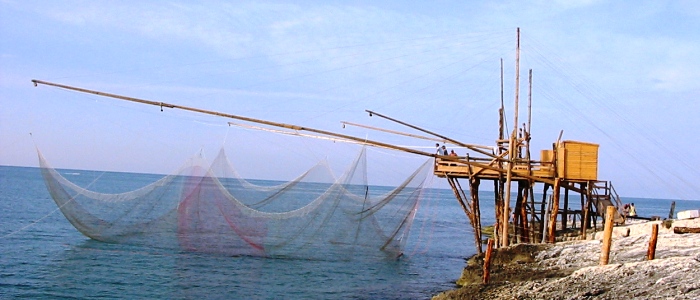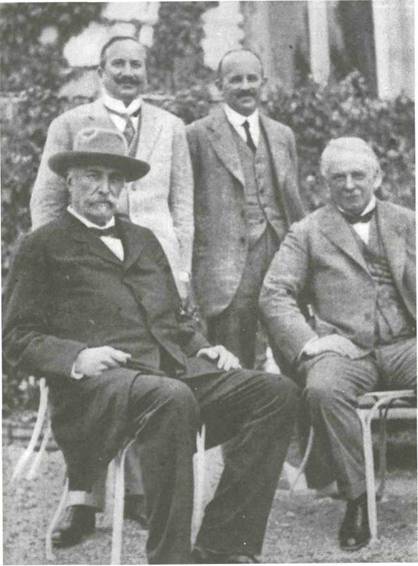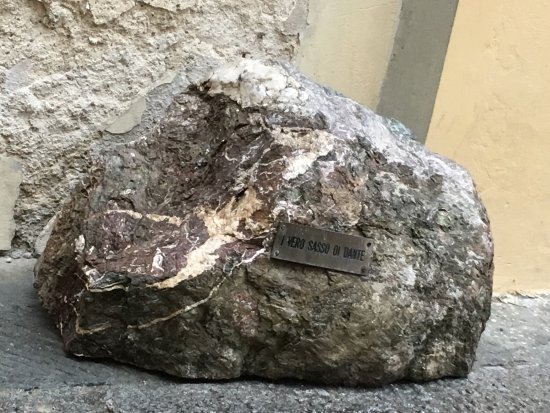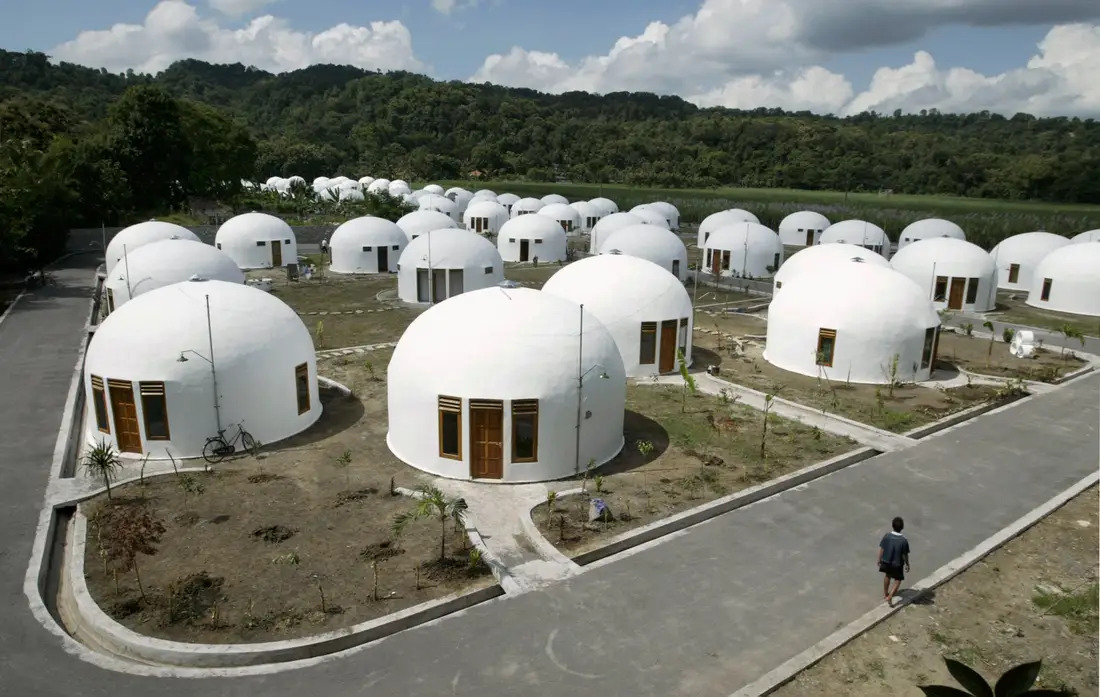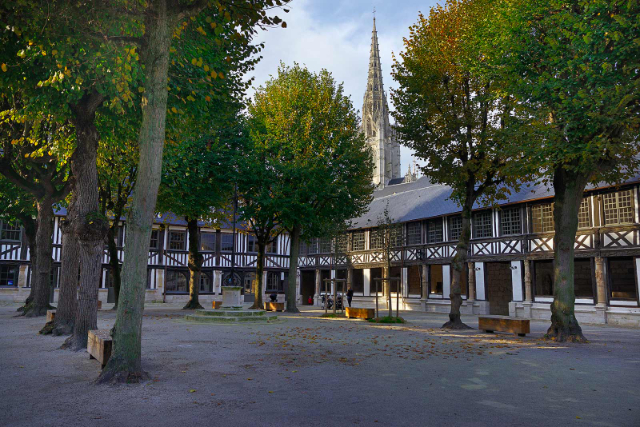The trabucco (in the Abruzzi and Molise variants also called trabocco, bilancia or travocco) is an ancient fishing machine typical of the Gargano, Molise and Abruzzi coasts, protected as a monumental heritage by the Gargano National Park and widespread in the lower Adriatic.
According to some Apulian historians, the trabucco is said to be an invention imported by the Phoenicians. The earliest documented date of existence dates back to the 18th century, a time when fishermen in Abruzzo had to ingeniously devise a fishing technique that was not subject to the area’s weather and sea conditions. The trabocchi, in fact, allow fishing without having to go out to sea: taking advantage of the rocky morphology of some of the fishing areas of the coast, they were built at the most prominent point of points and promontories, jutting the nets out to sea through a system of monumental wooden arms.
The trabucco is traditionally built from Aleppo pine wood, the pine common throughout the mid-Adriatic; this is because it is an almost inexhaustible material, given its prevalence in the area, moldable, saltwater-resistant and elastic (the trabucco must withstand the strong Mistral gusts that batter the lower Adriatic). Some trabocchi have been rebuilt in recent years, thanks in part to public funding such as Abruzzo Regional Law No. 99 of 9/16/1997, but they have long since lost their economic function that in past centuries made them the main source of livelihood for entire fishing families, acquiring in return the role of cultural symbols and tourist attractions. Some of the trabocchi have even been converted into restaurants. The term "trabocco" derives by synecdoche from that of the aforementioned net, i.e., from trabocchetto, and this, which is also used in bird catching and is synonymous with ‘trap,’ is due to the type of fishing, i.e., because the fish falls into a trap.
The fishing technique, which is also very effective, is by sight. It consists of intercepting, with large, tightly woven nets, the streams of fish moving along the ravines of the coast. The trabocchi are placed where the sea has adequate depth (at least 6m), and erected close to rocky points generally oriented SE or NO, so that they can favorably exploit the currents.
The net (which is technically a balance net) is lowered into the water by a complex system of winches and, likewise, promptly pulled up to retrieve the catch. At least two men are entrusted with the very hard task of operating the winches in charge of maneuvering the giant net; in the small trabocchi of the Molise and Abruzzo coasts, the winch is often operated electrically. Four men (who share the tasks of spotting fish and maneuvering), known as "overflowers," normally operate on the trabocco.
Overflowers are a defining feature of the coastal landscape of the lower Adriatic. However, their presence is also attested along the lower Tyrrhenian Sea.
Widespread all along the coast of the Province of Chieti where they originated, the trabocchi are so frequent that they give rise to the so-called Costa dei Trabocchi, which stretches precisely from Ortona to Vasto.
However, trabocchi are also widespread further south, between the Molise and Apulian coasts on the Gargano coast, especially in the area between Peschici and Vieste, where they are called "trabucchi" and are even protected by the Gargano National Park.
